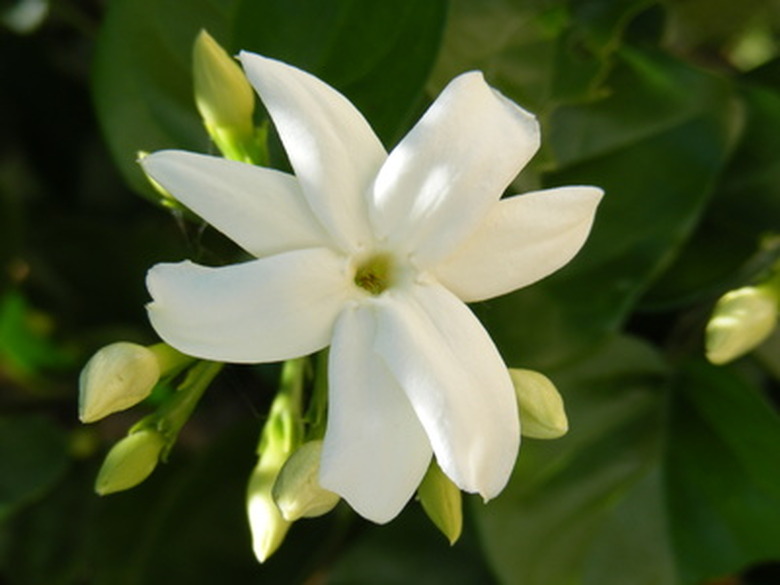Problems With Night Blooming Jasmine
Night Blooming Jasmine actually blooms in the daytime, but the scent doesn't come out until evening. It blooms in the summer heat and has little trumpet-shaped white flowers that are slightly waxy and too strongly scented for some people. When the flowers are spent, there are toxic, small white berries. Night Blooming Jasmine is a subtropical, frost-tender plant native to South America and the West Indies. The problems with the scent, toxicity and hardiness add to its invasive nature, proving the plant is not for everyone.
Hardiness
Night Blooming Jasmine is an evergreen plant in most areas but can get cold damage in light freezes. Prune cold damage in spring when new growth begins. Night Blooming Jasmine is only hardy in U.S. Department of Agriculture Plant Hardiness Zones 8 to 11. It dies back to the ground when confronted with freezing temperatures. It comes back in spring but only in Zones 8 and 9. Other cool zones with extended freezing cycles and snow kill the plant.
Toxicity
Exposure can cause respiratory distress and ingestion can bring on a fever. Absolute Astronomy reports that some ingestion of parts of the plant especially fruit can bring on other symptoms. Listed were rapid pulse, excessive salivation and gastritis. A study cited in the same publication noted that plant ingestion caused a cow to die and ingestion of berries by a 2-year-old child caused diarrhea, vomiting and blood in the stool. The plant is in the Nightshade family, which has poisonous members
Scent
The plant's most sought-after trait is its scent. This is also a problem. It can cause severe reactions in persons with allergies or sensitivities. The scent can be very strong in the evening, and it has had to be removed from indoors to help people that developed respiratory, nose and throat problems.
Invasiveness
Night Blooming Jasmine is listed as an invasive weed in Australia, and it is becoming a problem weed in New Zealand. The Pacific Island Ecosystems gave it a risk assessment of "high" and assigned it a number of 17, which lists it as dangerous to ecosystems. Florida has listed it on its Prohibited Plant list. As such, nurseries and garden centers are not allowed to sell the plant.
